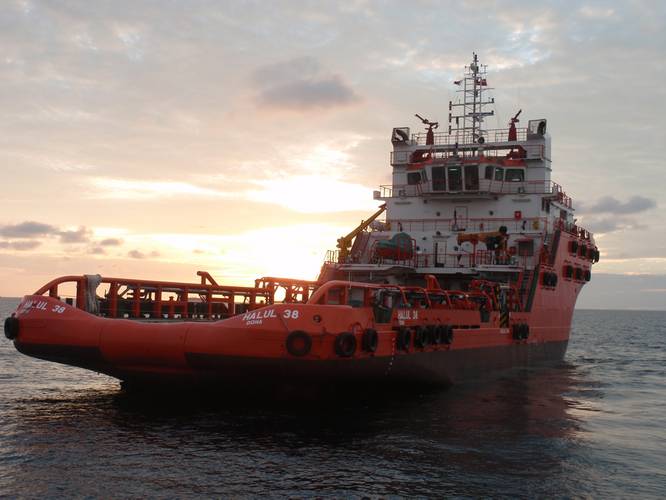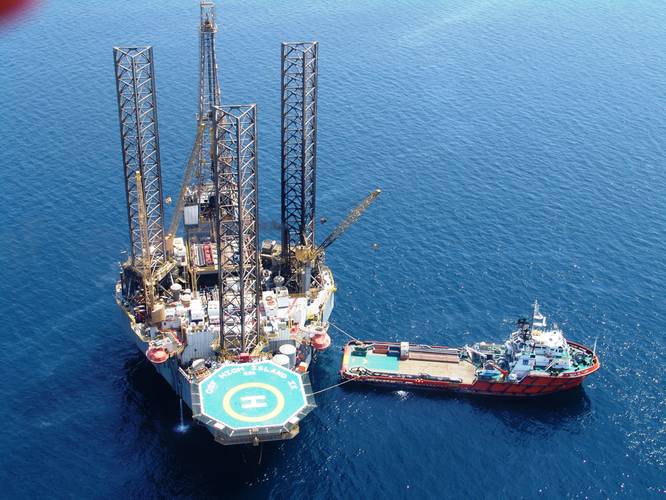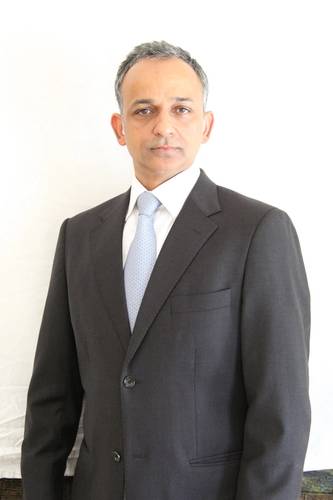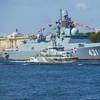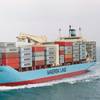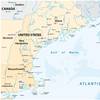Five Minutes with Halul Offshore CEO, Vivek Seth
Last month Maritime Reporter spent some time with Vivek Seth, CEO, of Qatar-based Halul Offshore Services Company, for his insights on the impact of low oil prices in the Middle East and beyond.
What is your background?
I became part of the Milaha family when I joined Halul Offshore in February 2014 as CEO. I am a second generation Marine Engineer. After sailing as a C/E I took my first shore job as Technical superintendent in Hong Kong for more than two years. Subsequently, I got my Masters in Business Administration from UK. After that, I began my offshore career at Tidewater where I worked in commercial and general management roles for five years in four different countries. Later, I moved to SVITZER in the UAE, where I worked as a Regional Commercial Manager for three years before joining Smit Lamnalco as Regional Managing Director for the Middle East and Indian Subcontinent for five years.
Halul Offshoren is not yet a ‘household name;’ please provide an overview of your company
Halul is a subsidiary of Milaha, which is one of the most established and distinguished shareholding companies in Qatar. Founded in 1957, Milaha is the country’s first shipping agent and was granted the first commercial license. It opened its first branch in Dubai 20 years later and has continued to reinforce its presence in Qatar, and expand to the UAE and Saudi Arabia. Halul was formed in 2000 with a focus on the Oil & Gas industry. Our fleet has grown substantially since then with a focus on IRM and subsea work too. We have expanded into Saudi Arabia and looking at other ways how we can grow the company beyond Qatar. Nevertheless, Qatar will always remain our strongest market.
So what are the specifics on the fleet you oversee today?
For our diving support vessels, we have the Al-Huwaila, built by ABG Shipyard Ltd., India in 2005; the Halul 41, which was built by ITAL THAI Marine Ltd in 2010; the KHATTAF, which was built by Smith Dock Limited, South Bank, and Cleveland, UK in 1986; and Shaddad which was built by ABG Shipyard, India in 2014.
For our anchor Handling Tugs and Platform Supply Vessels, the Halul 20 which was built by ABG Shipyard India in 2002; the Halul 21, 22 and 23 which were built by ABG Shipyard India in 2003; the Halul 24 which was built by Bharati Shipyard Ltd., India in 2006; the Halul 25 – built by Bharati Shipyard Ltd., India in 2007; the Halul 26 which was built by Q Ship Fabrication Yard, Qatar in 2007; the Halul 27 which was built by Q Ship Fabrication Yard, Qatar in 2008; the Halul 28 which was built by Hangtong shipyard, Guangzhou, China in 2007; the Halul 29 which was built by Hangtong shipyard, Guangzhou, China in 2008; the Halul 40 which was built by ITAL THAI Marine Ltd., Thailand in 2009; the Halul 60 which was built by Boustead Penang Shipyard in 2011; the Halul 61 which was built by Boustead Penang Shipyard in 2012 and the Halul 62 and 63 which was built by Grandweld, Dubai in 2013.
For our safety standby vessels, we have the Halul 10, 11 and 12 which were built by Zhenjiang shipyard, Zhenjiang China in 2002, the Halul 14 which was built by Cheoy Lee Shipyards Ltd in 2003, the Halul 15, 16 and 18 which were built by Jiangsu Wuxi Shipyard, China (POET) in 2007 and the Halul 17 which was built by Jiangsu Wuxi Shipyard, China (POET) in 2008.
Finally, for our work boats and maintenance vessels we have the Halul 30 which was built by Bharati Shipyard Ltd., India in 2002; Halul 32 which was built by Damen Shipyard, Holland in 1982; the Halul 35 which was built by Maroli Shipyard, Singapore in 1984; the Halul 36 which was built by Herman Surken GmbH, Papenburg, Germany in 1984; the Halul 37 which was built by BHARATI Shipyard Ltd, India in 2004 and the Halul 38 which was built by ASIA SEALINK, MALAYSIA in 2010.
It sounds as though your newbuilds are spread to quite a few yards. Where do you build your new vessels and why?
The new building is done where we can get quality at competitive price – be it Far East, India or the Middle East.
Late last year you mentioned a fleet of 50 within 18 months … are you still on track to meet this target?
We hope to have around 50 vessels by mid 2016.
So how is the continued low pricing for oil impacting your business?
We are no exception – this is a challenge across the oil and gas segment from NOC/IOC to the smallest company supporting this segment. The times are going to be difficult and we see requests for dropping day rates. However, we need to be careful that we do not compromise safety or operational effectiveness. Cost management is going to be crucial.
Working in a wild cyclical market like offshore oil and gas, what do you count as the secret to success?
There are quite a few success stories in this industry. It is important to have a good mix of long term and short term contracts and simultaneously listen to your customers and evolve.
You’ve mentioned before that “the gap between technology and human skills is widening exponentially.” How can this gap be eliminated, or at least minimized, both for your company and the industry as a whole?
It is key to ensure the staff are adequately and regularly trained to perform their tasks as the human and financial cost of accidents could be severe. Also we need to make sure the technology we adopt is reliable and that does not necessarily mean having the most sophisticated technology.
What new technologies are you looking at implementing in your fleet? What major advances in tech have helped your business the most in recent years?
We are currently looking towards enhancing the energy efficiency of our ships and lowering fuel consumption. Bunkers are typically the biggest cost for a client. By improving efficiency of the vessels, we are trying to reduce the opex and also the environmental footprint. Additionally, technology is a great enabler for safe operations by looking at redundancy through DP2 capability. The latest technology paints for the hulls and the implementation Energy Management Systems within our fleet are also initiatives we are looking at.
What did you learn at the Annual Offshore Support Vessels Forum?
The challenges for our industry are likely to last in the short to medium term. Our attendance at the forum was a great opportunity to listen to our peers and discuss with them ways to make the best out of a bad market situation. It also offered us the chance to review the latest technologies in our field and promote the Halul and Milaha brand.
When you look at the world, where do you see opportunities for growth?
As of now all regions are holding back due to the oil price. Once there is stability in the oil price, we will get a better view of the growth opportunities. However, Africa remains an attractive market in the long run.
What will your company look like 5 years from now? 10 years?
Halul and Milaha will only be bigger, better and stronger with the best in class standards. While this is easier said than done, we believe that the reputation we have garnered through the years and our financial strength will allow us to achieve our growth plans in the coming years.
(As published in the April 2015 edition of Maritime Reporter & Engineering News - http://magazines.marinelink.com/Magazines/MaritimeReporter)






